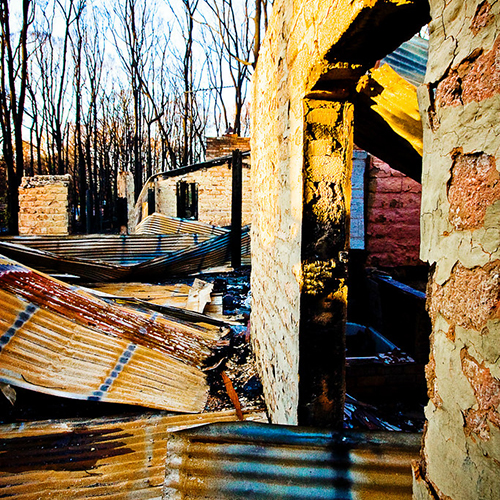09 December 2019
It was a perfect storm: scorching temperatures, high winds, low humidity and a tinder dry state. Saturday 7 February 2009 will go down in history as Australia’s worst bushfire, leaving 180 people dead, 450,000 hectares charred, and 2475 homes destroyed.
was a perfect storm: scorching temperatures, high winds, low humidity and a tinder dry state. Saturday 7 February 2009 will go down in history as Australia’s worst bushfire, leaving 180 people dead, 450,000 hectares charred, and 2475 homes destroyed.
But what of the survivors from Victoria’s ‘Black Saturday’, whose homes and livelihoods were decimated? How have they fared 10 years on?
A University of South Australia study of 230 people from some of the worst-affected townships shows the behavioural, demographic and financial factors that have both helped and hindered their recovery.
Those further down the road to recovery are the retirees, divorcees, childless households and people with a pragmatic attitude to life. Not surprisingly, those who prepared for “an inevitable” bushfire and were fully insured have also bounced back.
On the other hand, people who were over confident, stubborn, who failed to plan and were quick to blame others for their misfortune are still struggling to recover from their losses.
UniSA academic Dr Damien Wallace, one of the study leaders, says financial literacy has also determined the rate of progress for those directly affected by the bushfires.
“Financial literacy does not just apply to people who had insurance cover,” Dr Wallace says. “Survivors who had an intimate knowledge of their businesses and personal finances recovered a lot quicker because they were more likely to make sound financial decisions.”
An unusual finding is that survivors who earn between $37,000 and $180,000 have not recovered as quickly as those who earn much less. One hypothesis is that those householders on high incomes were more likely to invest more into their homes and businesses, so their losses were much larger.
Retirees and divorcees have typically fared better because their expenditure is lower than average families, and most people in these categories “live within their means,” the researchers say.
One interesting observation is that bushfire survivors who placed a high priority on superannuation and long-term stocks have recovered a lot slower because in the wake of the fires they haven’t had spare cash to top up these investments.
The link between recovery and home insurance is more complicated than it appears. The fact that many people in high risk fire zones are uninsured reflects the high premiums in these areas. Residential insurance proved a lifesaver for many survivors but the results for business-related insurance policies were mixed. Despite paid-up premiums, many business owners were under-insured and suffered lengthy disruptions to trading after the fires.
“The study findings show that financial literacy is the most consistent factor influencing how well survivors have recovered 10 years after Black Saturday,” Dr Wallace says. “These survey results point to a need for more financial education in rural areas. If – or when – a bushfire happens, they are far more likely to recover a lot quicker if they have a sound understanding of their finances.”
Notes for Editors
“The determinants of recovery from the Black Saturday bushfire: demographic factors, behavioural characteristics and financial literacy” is published in Accounting and Finance.
The paper was authored by Dr Damien Wallace, Ammar Asbi, Xi Yu and Nisreen Moosa from UniSA’s School of Commerce; Assoc Prof Vikash Ramiah from the University of Wollongong Dubai; and Dr Krishna Reddy from the Toi Ohoami Institute of Technology in Rotorua, New Zealand.
A survey was distributed to 230 survivors of the Black Saturday bushfire in the areas of Marysville and Kinglake during November 2016. Seventeen formal interviews were also conducted.
Media contact: Candy Gibson office +61 8 8302 0961 mobile: +61 434 605 142
email: candy.gibson@unisa.edu.au; Lead researcher: Dr Damien Wallace mobile: 0438 830 736 email: Damien.wallace@unisa.edu.au



